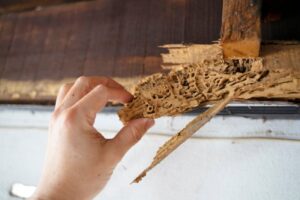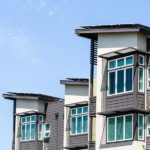Steps Involved In Termite Damage Repair
Introduction
Termites are notorious for their ability to damage and weaken the structural integrity of homes. Often their presence goes unnoticed until significant harm has been done, leaving homeowners with the challenging task of repairing the damage. The process of repairing termite damage is complicated and involves more than just patching up the affected areas. It requires a detailed evaluation of the extent of the damage, careful removal of compromised materials, and precise restoration efforts to ensure the structural soundness and aesthetic appeal of your home are reinstated. In this article, we’ll provide the step-by-step procedures necessary for effective termite damage repair, aiming to provide homeowners with a clear road map for navigating this challenging situation.

How Termites Affect a Home
The primary threat termites pose to a home lies in their relentless consumption of wood, which can compromise the structural stability of the building over time. Termites can hollow out beams, flooring, walls, and other wooden structures, leading to weakening and potential collapse if left unchecked. The sneaky nature of termites means that by the time their presence is detected, the damage could be extensive, requiring significant repairs. Beyond the structural implications, termite infestations can also diminish a home’s value and aesthetic appeal, making it important to take prompt and comprehensive action.
Steps To Follow In Termite Damage Repair
- Inspection – A thorough inspection is the foundation of effective termite damage repair. This step involves a professional assessment to learn the scope of the damage, which determines the repair strategy. Using specialized tools and expertise, inspectors can identify not only the visible damage but can also uncover hidden areas of concern so that the repair plan is comprehensive and leaves no stone unturned.
- Isolation and Cleaning – Isolating the damaged areas prevents further spread and provides a clean, clear workspace for the repair process. This step involves removing termite debris such as frass (a powdery residue left by boring insects) and discarded wings, and cleaning out the dust and wood particles resulting from termite activity. A clean workspace is essential for accurate repair work.
- Removal Of Damaged Wood – The key to ensuring the longevity of the repair work is the complete and accurate removal of all the damaged wood. This process involves cutting away the compromised material while preserving as much of the unaffected structure as possible. Precision is important to maintain the structural integrity of the building and to prepare the area for effective restoration.
- Filling And Patching – For minor damage, filling and patching can be an effective repair method. This involves using wood hardeners to reinforce the remaining structure and fillers to replace the removed material. The goal is to restore the damaged area’s strength and stability so that it can support the structure as intended. This step requires a careful application to ensure the fillers bond well with the existing wood and provide a durable repair.
- Sanding And Smoothing – After the fillers have set, the repaired, areas need to be sanded and smoothed to create a uniform surface. This preparation is important for the final finishing steps, as it ensures that the repairs blend seamlessly with the rest of the structure. Sanding must be done with precision to avoid damaging the surrounding wood, while achieving a smooth, even finish that’s ready for staining and sealing.
Avoiding Future Infestations
The repair of termite damage is not complete without addressing the root cause of the infestation. Implementing preventive measures is required to protect your home from future termite attacks. This includes treating the wood with termite resistant chemicals, proper ventilation to reduce moisture (which attracts termites), and maintaining a termite barrier around your property. Regular inspections can also help catch any new termite activity early, preventing the extent of damage experienced previously.
Contact MightyMite Termite Services For Termite Repair
Dealing with termite damage can be overwhelming for homeowners. MightyMite Termite Services offers specialized expertise in both termite control and damage repair, providing a holistic approach to restoring your home. Their knowledge and experience can streamline the repair process so that your home not only regains its structural integrity, but also its aesthetic beauty.
Conclusion
Repairing termite damage is a comprehensive process that extends beyond mere cosmetic fixes. It involves a thorough assessment of the damage, careful removal of compromised materials, and detailed restoration work to ensure the structural and aesthetic integrity of the home is restored. Taking proactive steps to prevent further infestations is important for safeguarding your property against the destructive impact of termites.
Reach Out to the Termite Experts
MightyMite Termite Services, anchored in the Bay Area, is your go-to for termite and pest management, catering to both homes and businesses. Noted for our detailed inspections and powerful treatments, we specialize in non-disruptive, not tent solutions for termite elimination, minimizing client inconvenience. Our green approach features treatments like eco-friendly organic orange oil. Dedicated to providing value, excellence, and convenience, we offer personalized treatment plans backed by a two-year guarantee. Our experienced team provides prompt, trustworthy service, including no-cost estimates and full-scale wood repairs post-infestations. Serving a wide range of counties in Northern California, we’re equipped to meet all of your termite and pest control requirements.
For more information about our services, or to schedule a free estimate, contact us via our website or give us a call at 408-377-3761.







